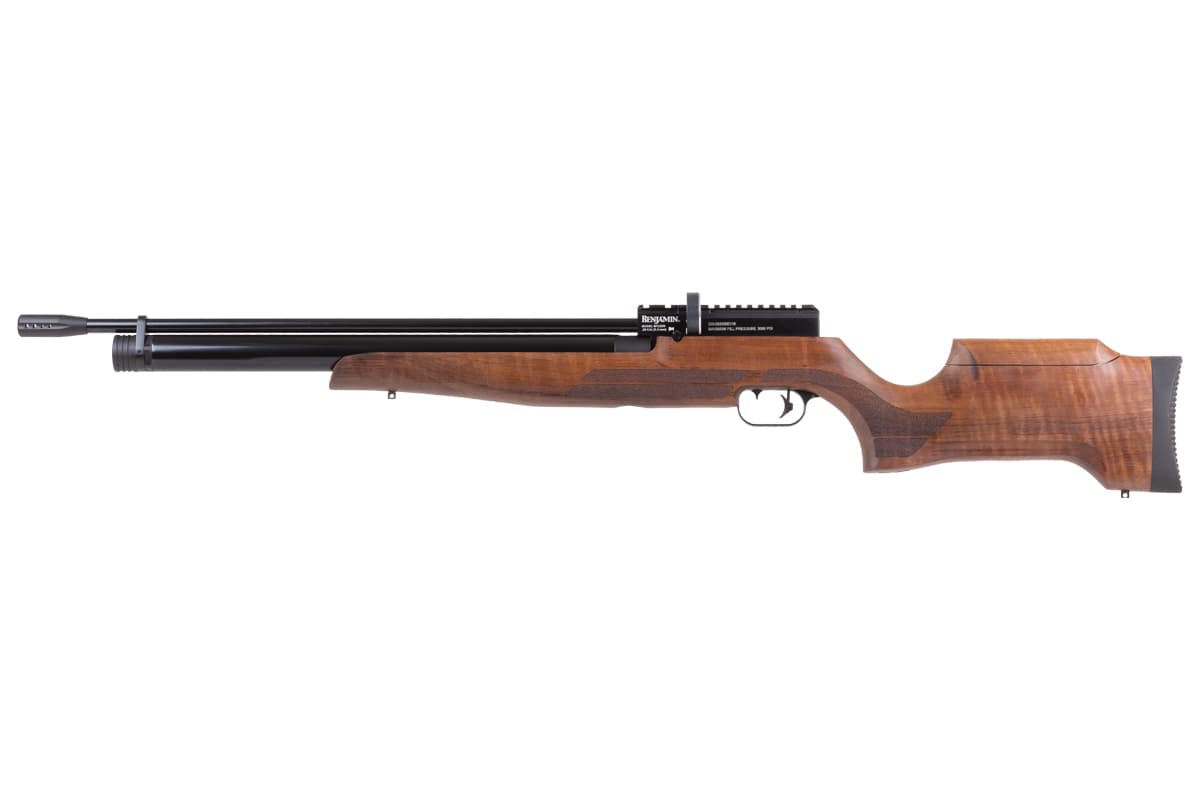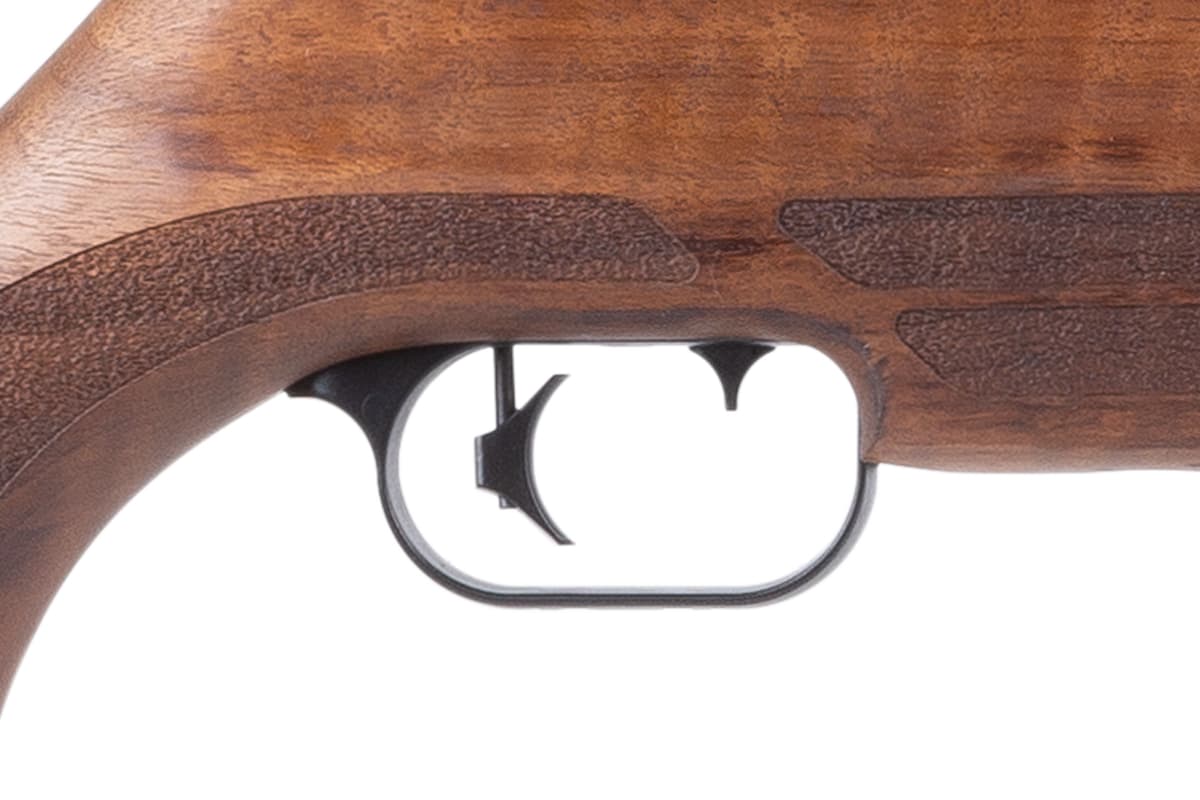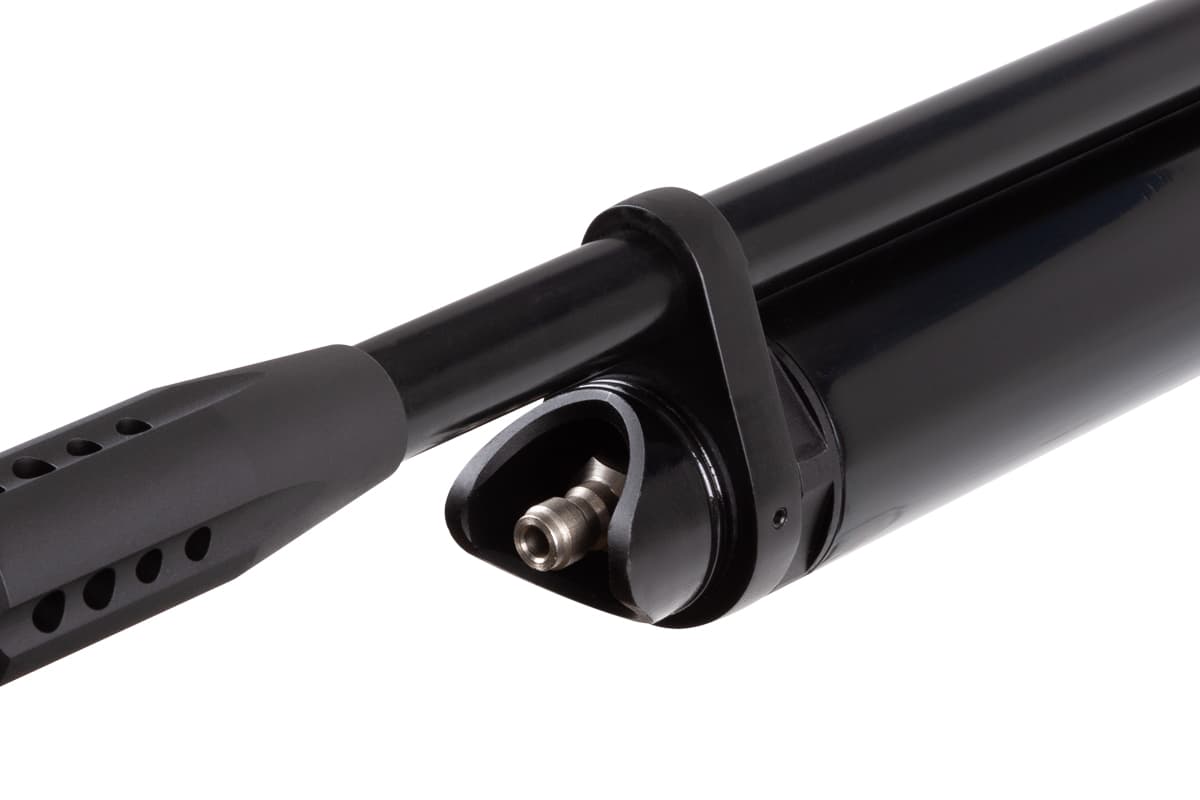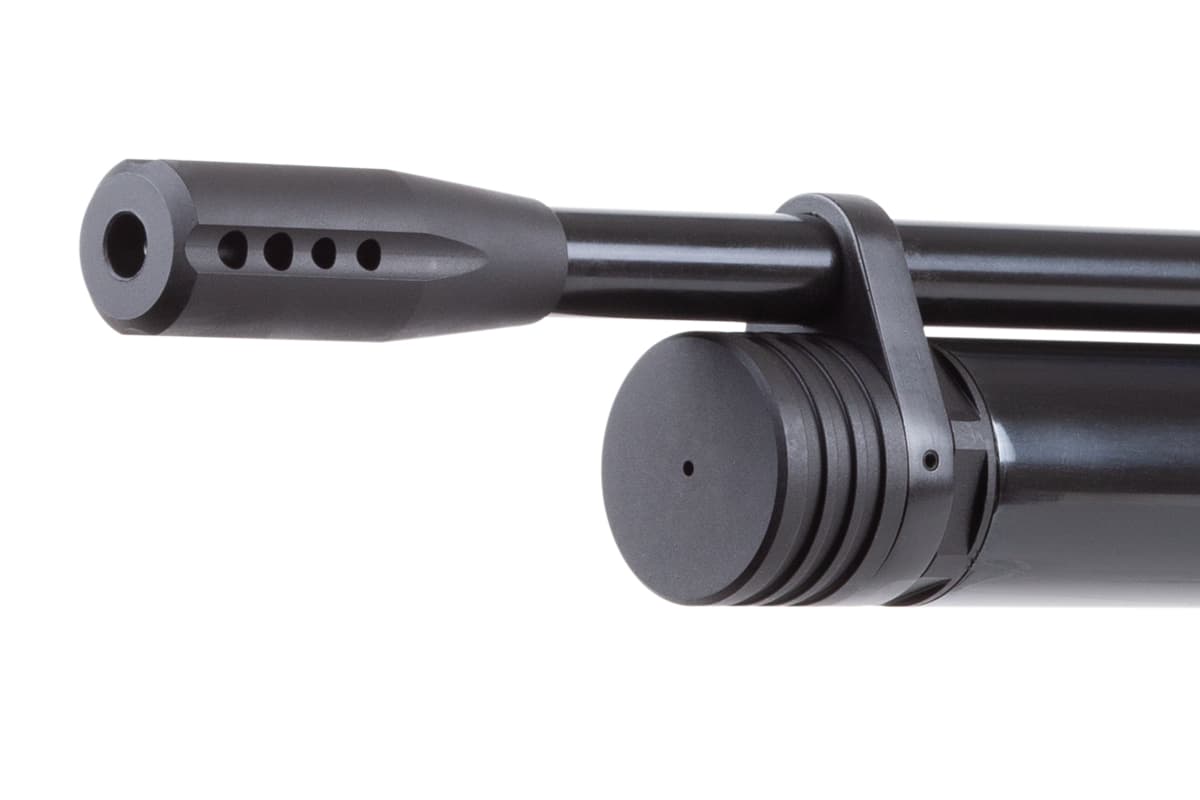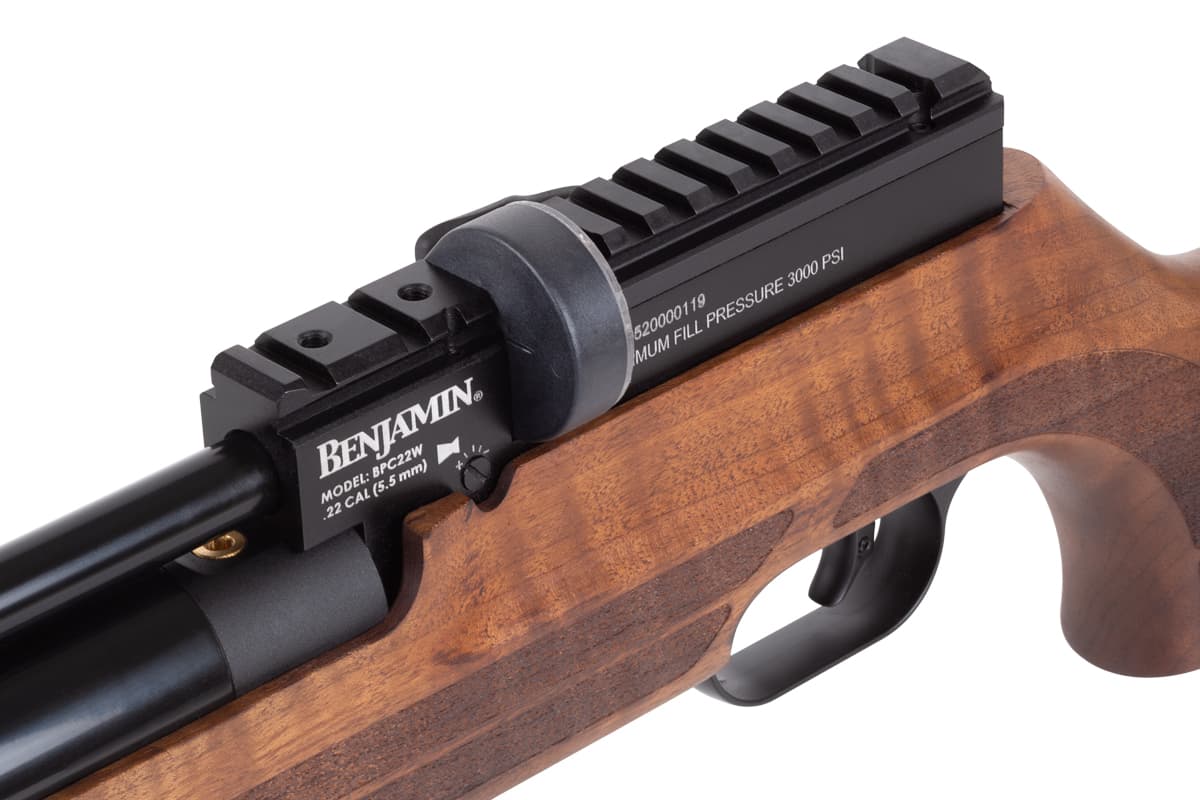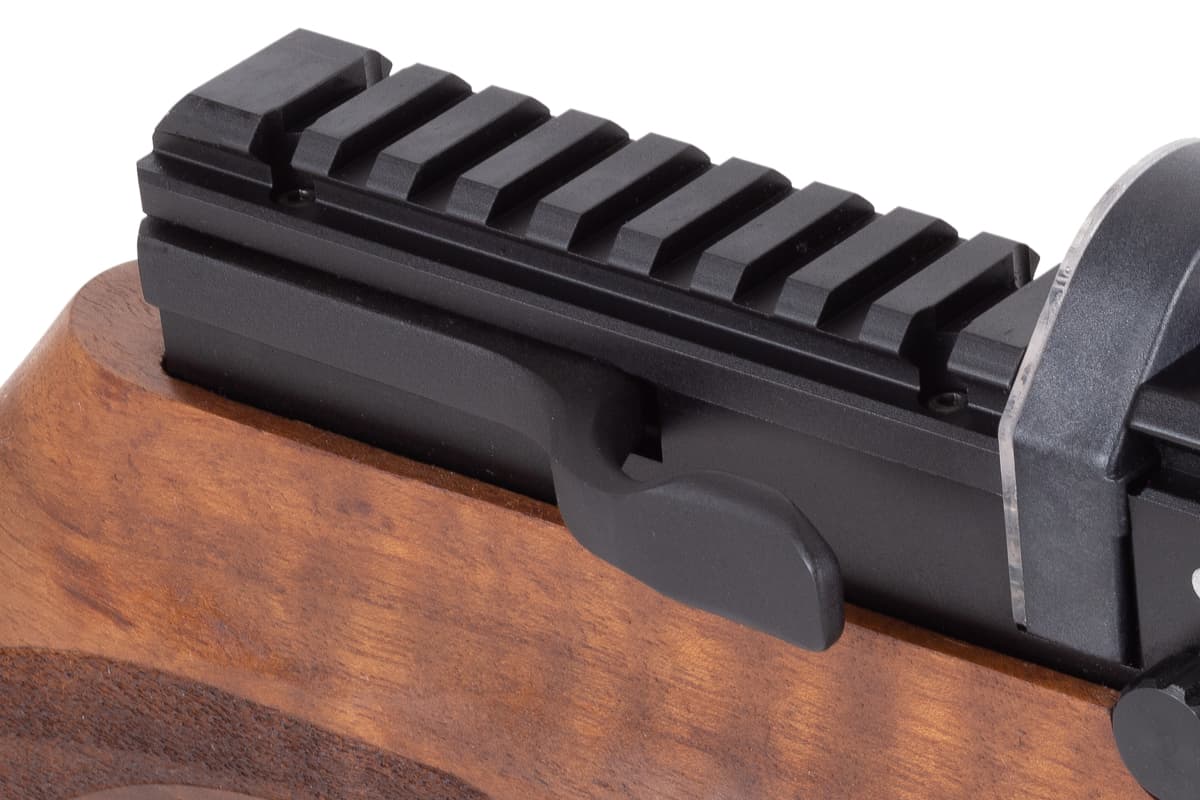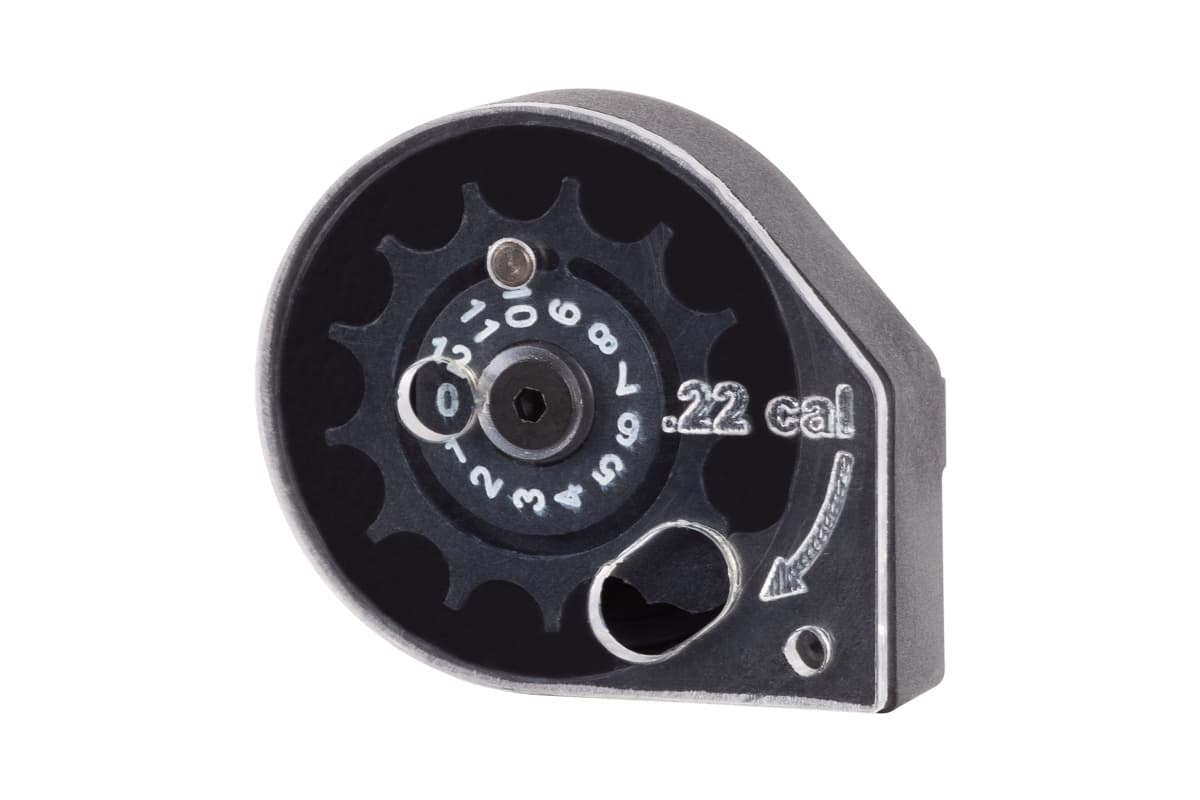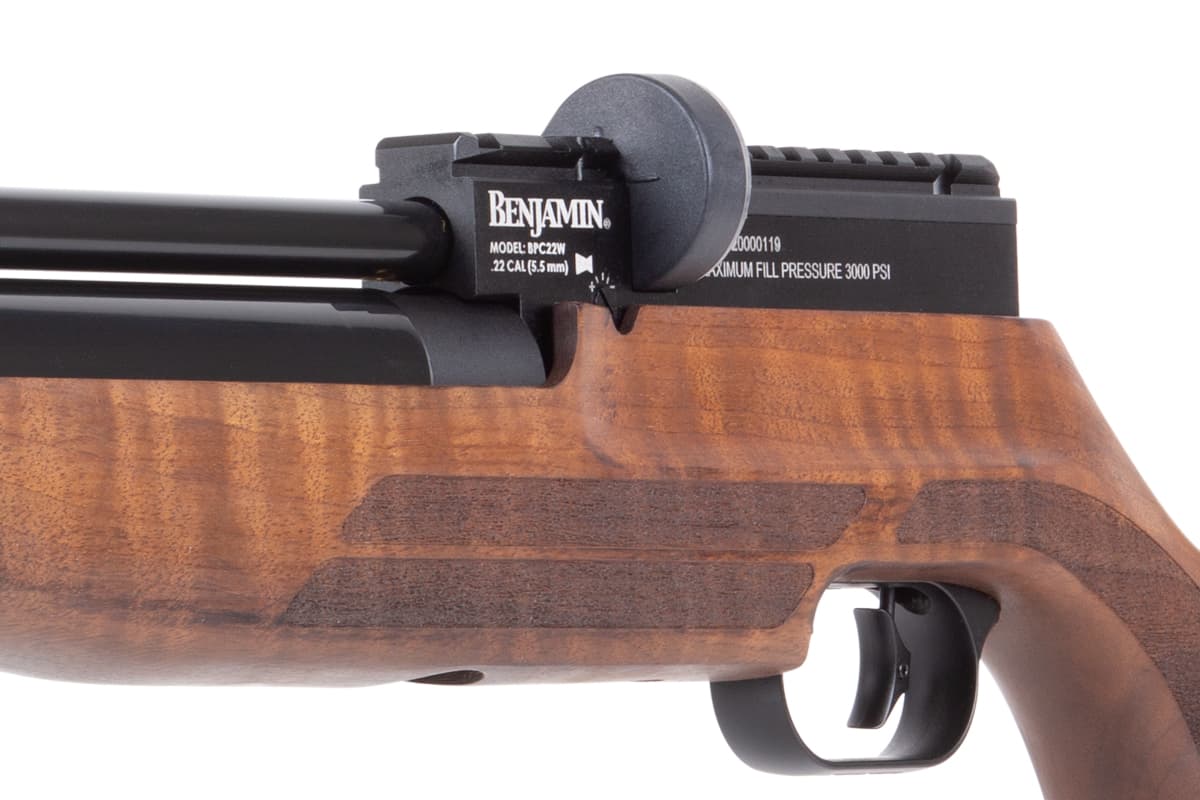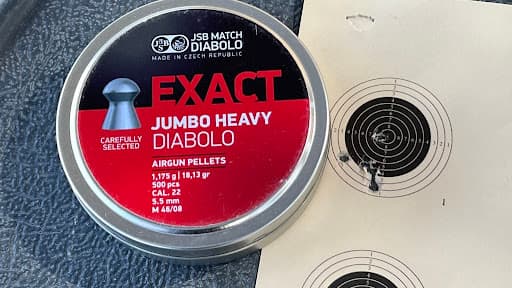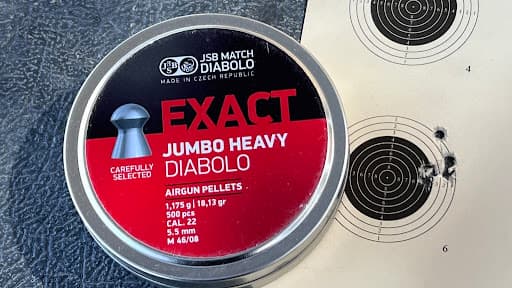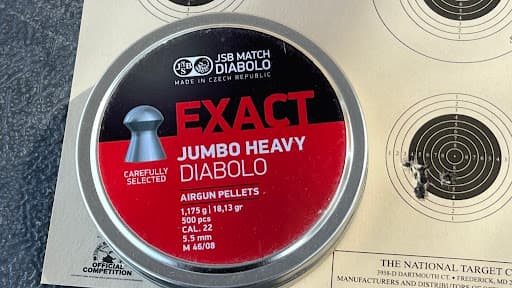Definitive Guide to Benjamin Cayden
When you open the box, you are greeted with a beautiful ambidextrous Turkish Walnut stock with an adjustable cheekpiece. This is a focal point of all the new Benjamin Specialty variants. The stocks on all the new models are just gorgeous.
The Cayen has nice checkering on the grip and the forearm and features sling studs for a typical rifle sling. The rough finish may not appeal to everyone, but we like the rustic aesthetic that it brings to the table.
The trigger is fully adjustable, not only pull weight but also shoe angle. This is not something you typically see on affordable airguns, and it speaks to the detail Benjamin put into creating this product line. It breaks at 1 pound 5 ounces from the factory with minimal 2nd stage creep.
The Cayden uses a decent-sized cylinder that fills to 3000 PSI. While the cylinder is larger, we call it hand pump friendly because of the fill pressure. With many airguns pushing 4000+ PSI, this is a nice throwback to a simpler time.
The report of the Cayden air rifle is on the louder side at 110 DB. We would not call this backyard friendly. The barrel is not shrouded or moderated. A threaded muzzle break at the end is removable, revealing 1/2 UNF threads. The barrel is held in place by the receiver and a front barrel band. It's a rock-solid system.
The Cayden does not have open sights, so you'll need to install a scope on the weaver rail on top of the receiver. We wish all manufacturers would go with this design. It just simplifies everything when it comes to scope rings and scope stability. We'll get to performance and accuracy soon, but suffice it to say that the Cayden deserves the nicest glass you can afford. We've topped our Cayden with a Hawke optic for testing.
Lastly, on the right side of the receiver, you'll find a nice cocking handle. It's thicker and wider than most and provides a lot of leverage when cocking. It's a nice system. The Cayden ships with two 12-shot magazines.
Let's get the Cayden PCP air rifle ready to shoot. First, we need to set the safety in front of the trigger. Now we need to fill our air cylinder to 3000 psi. While you can use a hand pump, we'd recommend something like the new RovAir or Nomad III personal compressor. Next, you fill the Cayden by connecting your fill source to the quick disconnect fitting at the front of the air cylinder. Once full, bleed the line and disconnect your fill source.
Now we need to load our magazines. They operate by rotating the top cover, which rotates the internal wheel. Insert your first pellet, which locks the wheel, and backfill all the slots. The magazine is deep, which allows for greater pellet variety. It would be fun to try some longer slugs and pointed pellets. Once you've loaded the magazine, you need to open the cocking handle and slide the magazine in from right to left, with the larger part going first. If you've shot other guns like the Benjamin Marauder, it will feel a bit backward at first, but you get used to it quickly.
Go ahead and close the cocking handle, and now you are ready to fire. To take another shot, simply cycle the cocking handle, pulling it back to engage the seer, and then push it forward to the closed position. Finally, squeeze the trigger to take your follow-up shot. The spring-fed magazine will automatically advance to the next pellet with each cycle.
Be sure to fully cock the gun. It's possible to cycle the cocking handle and not fully engage the seer. If that happens, open the cocking handle and remove the mag. Then, take your shot, open the cocking handle, and replace the mag. If you don't remove the mag, it's possible to feed multiple pellets into the breech and damage the rifle.
Performance and Accuracy
As mentioned above, the Cayden is an unregulated PCP. While you can get a lot of shots, upwards of 48 to 60, the shot curve will be extreme. It's best to find the sweet spot, shoot two to three mags, then refill to the optimal pressure. Each gun will be different, so we recommend chronographing your gun to find the best fill pressure to start near the sweet spot.
Starting at 3000 psi, you'll start at about 930 FPS shooting 18.13-grain JSB Pellets, which is about 35 foot-pounds. You'll drop to just under 30 foot-pounds after about 36 shots (three mags), and the velocity will drop to the 850's. We recommend shooting two magazines for best results at 50 yards and then topping back up to 3000 psi. The most consistent shots in our gun came from the first mag. We had a high of 935, a low of 919, an average of 928, an extreme spread of 16, and a standard deviation of 6.1.
We understand that these numbers might scare off folks used to looking at regulated airguns, but when you look at our 50-yard results, you may find that it's the holes in the paper that matter, not the numbers on the chrony.
Here are some groups that we got at 50 yards. We were shooting in extremely windy conditions, and our Cayden seemed unaffected. That's what we like to see. We shot multiple 5-shot groups, which all came in around 1" or less center to center.
We had one get away from us in this group, but you can see how this gun performs.
As mentioned above, we had a ton of wind during our testing, and these shots pushed out to the right.
Our final group pushed back to the left, but the group size remained consistent with our other groups. Again, we were shooting at 50 yards in the wind.
Summary
That wraps up our look at the Benjamin Cayden PCP pellet rifle. The rifle checks a lot of boxes for those that prefer traditional-looking, old-school airguns. The Turkish Walnut stock is a clear winner, and the power output combined with decent 50-yard accuracy in less-than-ideal conditions certainly make it an airgun to consider.
If you have more questions about the Benjamin Cayden, please visit our product page. Also, if you want to know more about the rest of Benjamin's PCP lineup, just call us, and we'll be pleased to tell you all about them.
